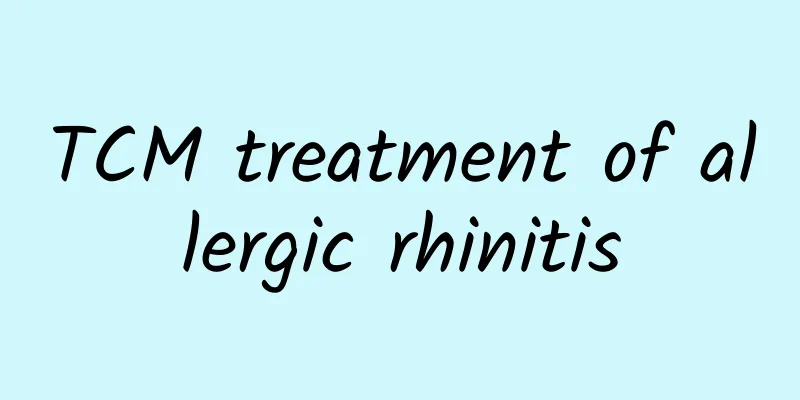TCM treatment of allergic rhinitis

|
Allergic rhinitis, also known as allergic rhinitis, is a relatively common nasal disease, which is divided into two categories: perennial and seasonal. The incidence of allergic rhinitis in my country is higher than the world average, and has shown a rapid growth trend in recent years. Most of the patients are teenagers, but the disease can occur in people of any age. Allergic rhinitis seriously affects the daily quality of patients. Many ancient Chinese medical books describe the symptoms of allergic rhinitis and the corresponding treatment methods. The treatment methods of allergic rhinitis in traditional Chinese medicine are mainly divided into external treatment, acupuncture and massage, and taking decoctions. External treatments include nasal drops, nasal blowing, zinc ion nasal injection, burning, nasal embankment sealing, and inferior turbinate submucosal injection. Acupuncture and massage are divided into body acupuncture (mainly for deficiency-cold syndrome and stagnant heat syndrome), ear acupuncture (treatment by alternately burying needles in both ears), acupoint application (application of plasters on Dazhui, Shenshu, and Chanzhong points to treat winter diseases in summer), blister therapy (placing blister beetle powder on Yinchang and Neiguan points), pus removal method (using a brush dipped in a medicine made of toad, musk, cinnabar, etc. and applying it to Yintang acupoint), and massage. The massage method mainly involves massaging the bridge of the nose, the Yingxiang point, the root of the nose, the cheeks and the neck, which can dredge the meridians and help clear the nasal passages. In addition, you can also take some empirical prescriptions, such as anti-allergic soup, lung clearing and desensitization soup, yang-boosting sneeze-treating soup, lung-warming and spleen-strengthening soup, nasal allergy soup, surface-consolidating and rhinorrhoea-stopping soup, wind-protecting and spleen-strengthening soup, etc. Most of these soups contain astragalus, white atractylodes and saposhnikovia, and must be prepared by a doctor. For allergic rhinitis, the principle of traditional Chinese medicine treatment is to treat both the symptoms and the root cause, combining internal and external treatments, and not focusing on only one aspect of treatment. For allergic rhinitis, we should treat both symptoms and symptoms at the same time, and adjust the treatment according to the principles of syndrome differentiation and treatment of the corresponding disease. Treatment varies according to symptoms. In the early stage of allergic rhinitis, the main focus is on clearing away heat, while in the middle and late stages, the treatment method of replenishing Qi and warming Yang is adopted. |
<<: Early symptoms of hepatitis
>>: How to treat hormone imbalance
Recommend
Symptoms of varicose veins in the lower limbs
People who often watch TV dramas must have heard ...
How to tell if your wrist is broken
We often encounter accidents such as falls and bu...
Top 10 best Chinese medicines for kidney tonification
When people are doing health preservation and hea...
Can pig gallbladder cure liver disease?
Pig gallbladder is the gallbladder of a pig and i...
Effects and contraindications of Shenmai Granules
Shenmai Granules can treat loss of appetite and a...
How to treat dizziness caused by insufficient qi and blood, recipes to replenish qi and blood
Insufficient Qi and blood can easily cause dizzin...
How to stay in shape during pregnancy
A beautiful figure is what every young woman desi...
White particles on the foreskin
For men, if the inconspicuous foreskin develops a...
Symptoms of unclean painless abortion
Painless abortion is also a relatively common met...
What causes heel pain?
There are many common problems in life. Solving t...
Can I eat chives during breastfeeding?
Chive flowers can nourish the kidneys and remove ...
Symptoms of gout
The physical feeling that people hate most is pai...
Remove chest birthmark
Birthmarks are actually not unfamiliar to everyon...
Endometrial polyp shedding
Endometrial polyp shedding is also known as endom...
Ear keloid cut
Many people inexplicably find many keloids on the...









